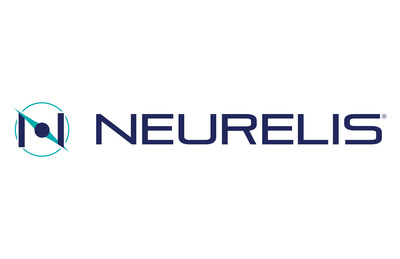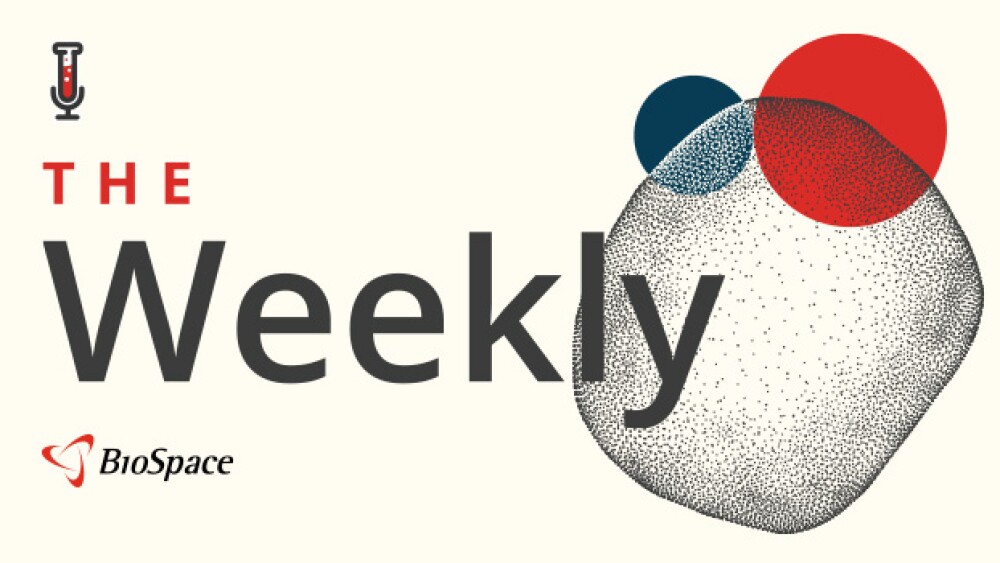| | Findings include analysis of seizure cluster treatment patterns with use of VALTOCO® (diazepam nasal spray) CIV and characterization of a diazepam dosing regimen in an animal model SAN DIEGO, April 11, 2024 /PRNewswire/ -- Neurelis, Inc. will present a poster on VALTOCO® (diazepam nasal spray) for the treatment of episodes of frequent seizure activity (i.e., seizure clusters) in patients with epilepsy ages 6 to 65 years, describing the time to treatment across different subpopulations. A second presentation will provide insight into characterization of a repeat-dosing model for preclinical diazepam studies. These findings will be showcased through posters at the 76th Annual Meeting of the American Academy of Neurology (AAN) in Denver from April 13 to 18, offering both in-person attendance and live online participation in a hybrid format. 
“These studies represent our continued commitment to improving outcomes for patients with epilepsy,” said Adrian L. Rabinowicz, M.D., Chief Medical Officer. “Our persistent research highlights the efficacy of VALTOCO, and we are delighted to disseminate these additional findings to patients, physicians, and healthcare organizations attending AAN, an event renowned for its rigorous standards.” Details of the selected poster presentations are below and available online to review at American Academy of Neurology Annual Meeting: -
Characterization of a Novel Repeat-dosing Model for Preclinical Diazepam Studies; Poster #001, in Neighborhood 4; Sunday, April 14th from 8:00 AM - 9:00 AM MDT A novel preclinical repeat-dosing study of diazepam (DZP) in a rat model was conducted to evaluate potential dosing strategies for preclinical in-life efficacy studies. Sustained DZP levels were observed in plasma and brain, akin to human levels, suggesting potential long-acting effects. Brain-to-plasma ratios indicated increased DZP accumulation in the brain with repeat dosing, supporting the suitability of this dosing regimen for in-life efficacy studies in preclinical models.
-
Shorter Time to Treatment with Diazepam Nasal Spray Is Associated with Faster Seizure Termination: A Subpopulation Analysis; Poster #001, in Neighborhood 1; Wednesday, April 17th from 8:00 AM - 9:00 AM MDT This post hoc analysis of a long-term safety study of DZP nasal spray to evaluate seizure cluster patterns following diazepam administration found that faster administration of the medication correlated with quicker resolution of seizure clusters. This association held true across different populations, emphasizing the critical role of prompt seizure recognition and treatment in reducing injury risk and healthcare utilization. Enrique Carrazana, M.D., Neurelis Senior Vice President, Strategic Initiatives commented, “Our findings underscore the critical necessity acknowledged within the epilepsy community: the pressing demand for safe, dependable, and easily accessible therapies to address the challenges of seizure clusters.” VALTOCO, a nasal spray for acute treatment of episodes of frequent seizure activity in adult and pediatric patients 6 years of age and older, was approved by the U.S. Food and Drug Administration (FDA) on Jan. 10, 2020. About Neurelis Neurelis, Inc., is a neuroscience company focused on the development and commercialization of therapeutics for the treatment of epilepsy and neurologic disorders characterized by high unmet medical need. In 2020, the FDA approved Neurelis’ VALTOCO® (diazepam nasal spray) as an acute treatment of intermittent, stereotypic episodes of frequent seizure activity (i.e., seizure clusters, acute repetitive seizures) that are distinct from an individual’s usual seizure pattern in adult and pediatric patients 6 years of age and older. VALTOCO is a proprietary formulation of diazepam incorporating the science of INTRAVAIL®, a transmucosal absorption enhancement technology that enables the noninvasive delivery of a broad range of protein, peptide and small-molecule drugs. For more information on VALTOCO, please visit www.valtoco.com. For the latest scientific information on VALTOCO, please visit http://www.neurelismedicalaffairs.com/. Neurelis is also developing NRL-1004, an investigational, Phase 1 stage intranasal olanzapine for treatment of acute agitation episodes associated with schizophrenia and bipolar disorder. In addition, Neurelis is also developing NRL-1049 (previously known as BA-1049), an investigational, Phase 1 new chemical entity Rho kinase (ROCK) inhibitor, for the treatment of cerebral cavernous malformations (CCMS), a rare disorder of the central nervous system (CNS). For more information on Neurelis, please visit www.neurelis.com. Important Safety Information about VALTOCO: Indication VALTOCO® (diazepam nasal spray) is indicated for the acute treatment of intermittent, stereotypic episodes of frequent seizure activity (ie, seizure clusters, acute repetitive seizures) that are distinct from a patient’s usual seizure pattern in patients with epilepsy 6 years of age and older. WARNING: RISKS FROM CONCOMITANT USE WITH OPIOIDS; ABUSE, MISUSE, AND ADDICTION; and DEPENDENCE AND WITHDRAWAL REACTIONS - Concomitant use of benzodiazepines and opioids may result in profound sedation, respiratory depression, coma, and death. Reserve concomitant prescribing of these drugs for patients for whom alternative treatment options are inadequate. Limit dosages and durations to the minimum required. Follow patients for signs and symptoms of respiratory depression and sedation.
- The use of benzodiazepines, including VALTOCO, exposes users to risks of abuse, misuse, and addiction, which can lead to overdose or death. Abuse and misuse of benzodiazepines commonly involve concomitant use of other medications, alcohol, and/or illicit substances, which is associated with an increased frequency of serious adverse outcomes. Before prescribing VALTOCO and throughout treatment, assess each patient’s risk for abuse, misuse, and addiction.
- The continued use of benzodiazepines may lead to clinically significant physical dependence. The risks of dependence and withdrawal increase with longer treatment duration and higher daily dose. Although VALTOCO is indicated only for intermittent use, if used more frequently than recommended, abrupt discontinuation or rapid dosage reduction of VALTOCO may precipitate acute withdrawal reactions, which can be life-threatening. For patients using VALTOCO more frequently than recommended, to reduce the risk of withdrawal reactions, use a gradual taper to discontinue VALTOCO.
Contraindications: VALTOCO is contraindicated in patients with: - Hypersensitivity to diazepam
- Acute narrow-angle glaucoma
Central Nervous System (CNS) Depression
Benzodiazepines, including VALTOCO, may produce CNS depression. Caution patients against engaging in hazardous activities requiring mental alertness, such as operating machinery, driving a motor vehicle, or riding a bicycle, until the effects of the drug, such as drowsiness, have subsided, and as their medical condition permits. The potential for a synergistic CNS-depressant effect when VALTOCO is used with alcohol or other CNS depressants must be considered, and appropriate recommendations made to the patient and/or care partner. Suicidal Behavior and Ideation
Antiepileptic drugs (AEDs), including VALTOCO, increase the risk of suicidal ideation and behavior. Patients treated with any AED for any indication should be monitored for the emergence or worsening of depression, suicidal thoughts or behavior, and/or unusual changes in mood or behavior. Glaucoma
Benzodiazepines, including VALTOCO, can increase intraocular pressure in patients with glaucoma. VALTOCO may only be used in patients with open-angle glaucoma only if they are receiving appropriate therapy. VALTOCO is contraindicated in patients with narrow-angle glaucoma. Neonatal Sedation and Withdrawal Syndrome
Use of VALTOCO late in pregnancy can result in sedation (respiratory depression, lethargy, hypotonia) and/or withdrawal symptoms (hyperreflexia, irritability, restlessness, tremors, inconsolable crying, and feeding difficulties) in the neonate. Monitor neonates exposed to VALTOCO during pregnancy or labor for signs of sedation and monitor neonates exposed to VALTOCO during pregnancy for signs of withdrawal; manage these neonates accordingly. Risk of Serious Adverse Reactions in Infants due to Benzyl Alcohol Preservative
VALTOCO is not approved for use in neonates or infants. Serious and fatal adverse reactions, including “gasping syndrome,” can occur in neonates and low-birth-weight infants treated with benzyl alcohol–preserved drugs, including VALTOCO. The “gasping syndrome” is characterized by central nervous system depression, metabolic acidosis, and gasping respirations. The minimum amount of benzyl alcohol at which serious adverse reactions may occur is not known. Adverse Reactions
The most common adverse reactions (at least 4%) were somnolence, headache, and nasal discomfort. Diazepam, the active ingredient in VALTOCO, is a Schedule IV controlled substance.
To report SUSPECTED ADVERSE REACTIONS, contact Neurelis, Inc. at 1-866-696-3873 or FDA at 1-800-FDA-1088 (www.fda.gov/medwatch). Please read full Prescribing Information, including Boxed Warning. Contacts: Neurelis:
Brittany Bradrick, Chief Operating Officer and Chief Financial Officer, +1 858 251 2135 Media:
Glenn Silver, FINN Partners, +1 646 871 8485  View original content to download multimedia:https://www.prnewswire.com/news-releases/neurelis-announces-two-poster-presentations-at-the-76th-annual-meeting-of-the-american-academy-of-neurology-302112871.html View original content to download multimedia:https://www.prnewswire.com/news-releases/neurelis-announces-two-poster-presentations-at-the-76th-annual-meeting-of-the-american-academy-of-neurology-302112871.html
SOURCE Neurelis, Inc. | |





